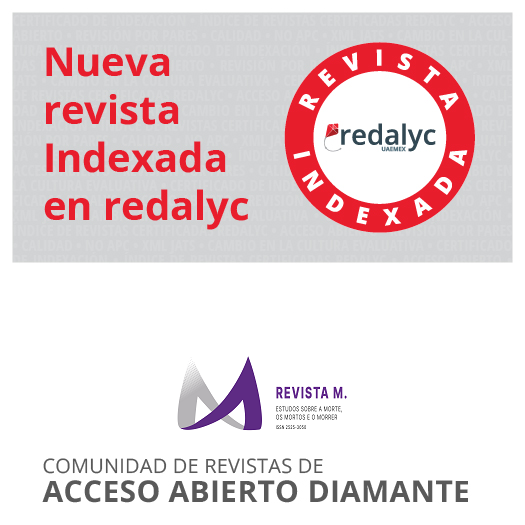Pela vontade de Ahura Mazdā. Morte, monumentalidade e memória na necrópole aquemênida de Naqš-e Rostam
DOI:
https://doi.org/10.9789/2525-3050.2022.v7i14.295-313Palavras-chave:
Tecnologia de Memória, Monumentalização, Império Aquemênida, Naqš-e Rostam, ZoroastrismoResumo
Este artigo objetiva compreender o papel político, religioso e simbólico das tumbas aquemênidas (século VI AEC – IV AEC) na necrópole de Naqš-e Rostam. A existência destes mausoléus indica que os governantes aquemênida decidiram não seguir a “ortodoxia zoroastrista” (a religião que possivelmente era professada pelos persas neste período), que estipulava um rito funerário baseado na escarnação do cadáver e não previa a cremação, o enterramento ou a construção de túmulos. Assim, é possível argumentar que as tumbas de Naqš-e Rostam foram projetadas como monumentos de cunho político e propagandístico, e não possuíam uma função unicamente espiritual. A análise desta necrópole levará em consideração o conceito de tecnologia de memória no contexto histórico iraniano, como proposto por Matthew Canepa, e a abordagem não-essencialista do zoroastrismo a partir de Philip Kreyenbroek. A partir deste trabalho investigativo conclui-se que, entre os aquemênidas, a monumentalização da morte visava criar uma memória atemporal da autoridade persa.
Downloads
Referências
Abdolmohammadi, P. & Cama, G. (2020). Contemporary Domestic and Foreign Policies of Iran. Londres: Palgrave Macmillan.
Araújo, M. T. M. (2018). O Império Aquemênida em Heródoto: Identidade e Política nas Histórias [Tese de Doutorado, Universidade de São Paulo].
Araújo, M. T. M. (2019). O Império Persa e o Pensamento Político Clássico: um Panorama. Revista Archai, 25, 1–24.
Armstrong, K. (2006). The Great Transformation: the Beginning of our Religious Tradition. New Tork: Alfred A. Knopf.
Basirov, O. (2005). The Achaemenian Practice of Primary Burial: An Argument against Their Zoroastrianism? Or a Testimony of Their Religious Tolerance? In J. Curtis & S. J. Simpson (org.). The World of Achaemenid Persia: History, Art and Society in Iran and the Ancient Near East (pp. 75-84). Londres: I.B. Tauris.
Bloedow, E. F. & Loube, H. M. (1997). Alexander the Great “Under Fire” at Persepolis. Klio, 79 (2), 341–353.
Boyce, M. & Bivar, A. D. H. (1998) Eṣṭaḵr. In Encyclopaedia Iranica (v. VIII, n. 6, pp. 643–646).
Boyce, M. (1975). A History of Zoroastrianism (v. I). Leiden: Brill.
Boyce, M. (1989). Amǝša Spǝnta. In Encyclopaedia Iranica (v. I, n. 9, pp. 633–636).
Canepa, M. P. (2010). Technologies of Memory in Early Sasanian Iran: Achaemenid Sites and Sasanian Identity. American Journal of Archaeology, 114 (4), 563–596.
Compareti, M. (2020). Contributions for the Identification of the Human Bust on a Winged Disc in Iranian Arts. In K.-A. Niknami & A. Hozhabri (org.). Archaeology of Iran in the Historical Period (pp. 157-170) New York: Springler.
De Jong, A. (1997). Traditions of the Magi: Zoroastrianism in Greek and Latin literature. Leiden: Brill.
Edrey, M. (2008). The Dog Burials at Achaemenid Ashkelon Revisited. Tel Aviv, 35 (2), 267–282.
Harmanşah, Ö. (2013). Cities and the Shaping of Memory in the Ancient Near East. Cambridge: Cambridge University Press.
Huff, D. & O’Kane, B. (2012). Čahārṭāq. In Encyclopaedia Iranica (v. IV, n. 6, pp. 634–642).
Knapp, B. (2009). Monumental Architecture, Identity and Memory. Proceedings of the Symposium: Bronze Age Architectural Traditions in the East Mediterranean: Diffusion and Diversity. Weilheim: Verein zur Förderung der Aufarbeitung der Hellenischen Geschichte (pp. 47–59).
Kreyenbroek, P. G. (2005). Zoroastrianism under the Achaemenians: a Non-Essentialist Approach. In J. Curtis & S. J. Simpson (org.). The World of Achaemenid Persia: History, Art and Society in Iran and the Ancient Near East (pp. 103-109). Londres: I.B. Tauris.
Kuhrt, A. (2007). The Problem of Achaemenid ‘Religious Policy’. In B. Groneberg & H. Spieckermann (Org.). Beihefte zur Zeitschrift für die alttestamentliche Wissenschaft (pp. 118-142). Berlim: Walter de Gruyter.
Merhavy, M. (2015). Religious Appropriation of National Symbols in Iran: Searching for Cyrus the Great. Iranian Studies, 48 (6), 933–948.
Merhavy, M. (2017). Cyrus Day - A Tradition in the Making. Iran Pulse Heading, 5 (80), [s.p.].
Nora, P. (org.) (1984). Les Lieux de Mémoire. Paris: Gallimard.
Pearson, M. P. (1999). Archaeology of Death and Burial. College Station: Texas A & M University Press.
Pinto, O. L. V. (2021). Roma e Pérsia no Século III: uma Tradução da Res Gestae Divi Saporis. In S. C. Silva & M. Antiqueira (Org.). O Império Romano no Século III: Crises, Transformações e Mutações (pp. 139-166). São João do Meriti: Desalinho.
Reich, G. (2020). Monumental Refraction: Monuments, Identity, and Historical Consciousness. Historical Encounters: A Journal of Historical Consciousness, Historical Cultures, and History Education, 7 (1), 1–23.
Russell, J. R. (2000). Burial III. In Encyclopaedia Iranica (v. VI, n. 6, pp. 561–563).
Skjærvø, P. O. (1997). The State of Old Avestan Scholarship. Journal of the American Oriental Society, 117 (1), 103–114.
Skjærvø, P. O. (2014). Achaemenid Religion. Religion Compass, 8 (6), 175–187.
Stausberg, M. (2009). Hell in Zoroastrian History. Numen, 56 (2/3), 217–253.
Stronach, D. (1978). Pasargadae: a Report of the Excavations Conducted by the British Institute of Persian Studies from 1961 to 1963. Oxford: Oxford University Press.
Von Gall, H. (2009). Naqš-e Rostam. In Encyclopaedia Iranica, [s.p.].
Williams, H. (2013). Death, Memory, and Material Culture. In L. N. Stutz & S. Tarlow (org.). The Oxford Handbook of the Archaeology of Death and Burial (pp. 195-208). Oxford: Oxford University Press.
Downloads
Publicado
Como Citar
Edição
Seção
Licença
Copyright (c) 2022 Revista M. Estudos sobre a morte, os mortos e o morrer

Este trabalho está licenciado sob uma licença Creative Commons Attribution-NonCommercial-NoDerivatives 4.0 International License.
Licença Creative Commons CC BY 4.0




















